Slavery is the dark side of human civilization. Since its introduction over 11,000 years ago, it has led to unimaginable suffering of people who were trapped in it. Though there have been millions of slaves throughout history, the stories of only a few have been recorded. Among them, only a few have managed to escape to freedom before slavery was officially abolished. Here are some of those amazing escape stories of slaves throughout history, many of whom even helped free several others during their lifetime.
1. In 1780, a slave named Elizabeth Freeman essentially ended slavery in Massachusetts by suing for freedom in the courts on the basis that the newly signed constitution stated that “All men are born free and equal.”
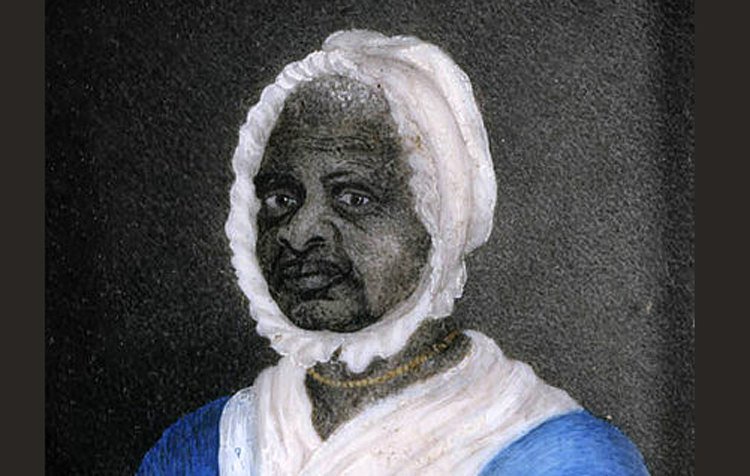
Elizabeth Freeman was born into slavery at a farm around 1744 in New York and was given the name Bett. When she was seven years old, the farm’s owner gave her to his daughter Hannah and her new husband John Ashley, a Yale-educated lawyer, businessman, wealthy landowner, and a community leader. In 1780, Bett shielded a young servant girl when Hannah tried to hit her with a heated shovel and sustained a deep wound in her arm. Later, during the same year, she attended a public gathering where the newly ratified Massachusetts Constitution was read. After realizing that Article 1 granted freedom and equality to all, she went to Theodore Sedgwick, a young abolitionist lawyer, to help her sue for her freedom.
Sedwick accepted her case and that of another of Ashley’s slaves called Brom. Sedgwick, with the aid of Tapping Reeve, the founder of Litchfield Law School, took the case Brom and Bett V. Ashley to court, and the jury ruled in favor of Brom and Bett. Since Ashley himself did not purchase either of them, the jury also ordered thirty shillings as compensation for their labor. After the ruling, Bett renamed herself Elizabeth Freeman. The case set a precedent for other, future cases and ended slavery in Massachusetts.
2. In 1849, Henry “Box” Brown successfully escaped slavery by mailing himself in a wooden crate from Virginia to abolitionists in the free state of Pennsylvania.
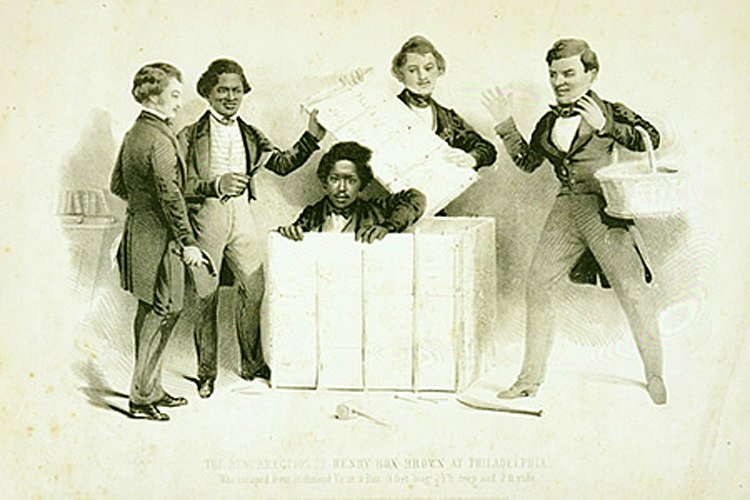
Henry Brown was born into slavery in 1816 on a plantation in Virginia. He grew up with very reverential views towards his master for his kindness. Brown was married to another slave named Nancy and had three children with her. Though Brown had been paying his master so that his family wouldn’t be sold, he was betrayed. His master sold his pregnant wife and his three children to another slave owner. With the help of a sympathetic White shoemaker and a free Black man, Brown devised a plan to escape by shipping himself in a box to Pennsylvania. A three-foot-long and two-foot-wide box, padded with coarse woolen cloth with a small hole for air and labeled “dry goods” was prepared.
On March 29, 1849, the day of the escape, Brown burned his hand to the bone with sulfuric acid to have an excuse to stay away from work. After getting in the box, he was transported by wagon, railroad, steamboat, wagon again, railroad, ferry, railroad, and finally another wagon. Despite the instructions “handle with care” and “this side up”, the box was roughly handled and several times placed upside down. Finally, 27 hours of ordeal later, the box was received by members of the Philadelphia Vigilance Committee.
3. As an adolescent, Harriet Tubman received a head injury from her owner that gave her lifelong seizures and powerful visions. In 1849, she escaped using the Underground Railroad after realizing she would be sold again and that she was actually legally free.
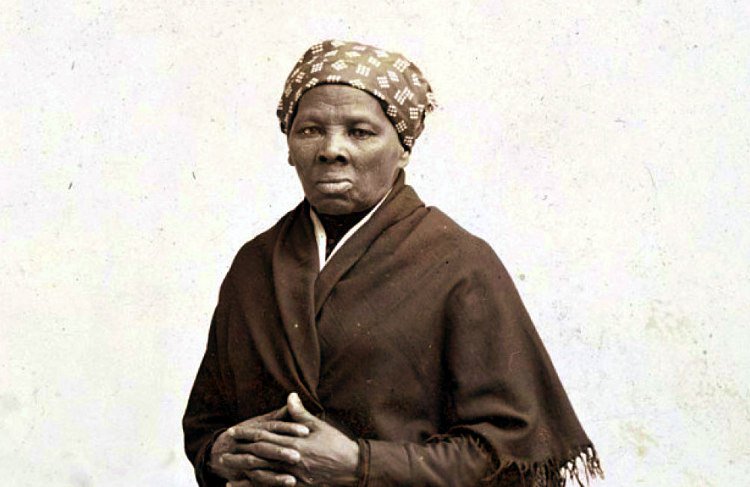
Harriet Tubman suffered great physical abuse as a child from her masters. One day, while on her way to get supplies, a man threw a two-pound weight at his slave who was running away which hit her head instead. Bleeding and unconscious, she was returned to her owner and was just laid on the seat of a loom for two days without treatment. She was sent back to work in the fields right after that. As a result, she began having seizures and would fall unconscious without warning which frightened her family.
By 1840, Tubman’s father was manumitted based on a former owner’s will which stated that he be set free at 45 years of age. His actual age at that time was 55. Tubman found out the same was true about her mother. Since a mother’s status dictated that of her child, her children must also be free. But she was still kept a slave by her owner and Tubman found it hard to contest legally. By 1844, she married a free Black man and in 1849, she became ill again. Her owners tried to sell her again, but she escaped using the Underground Railroad, a network of secret routes and safe houses, to Philadelphia. Since then, she helped many other slaves escape and was well-known for her ingenious plans to avoid capture or detection.
4. In 1848, Ellen and William Craft escaped by traveling openly on a steamboat to Philadelphia. Being fair skinned, Ellen dressed up as a White male slaveholder on a trip with her Black slave. She feigned illness to avoid speaking and put her arm in a sling to hide the fact that she couldn’t write.
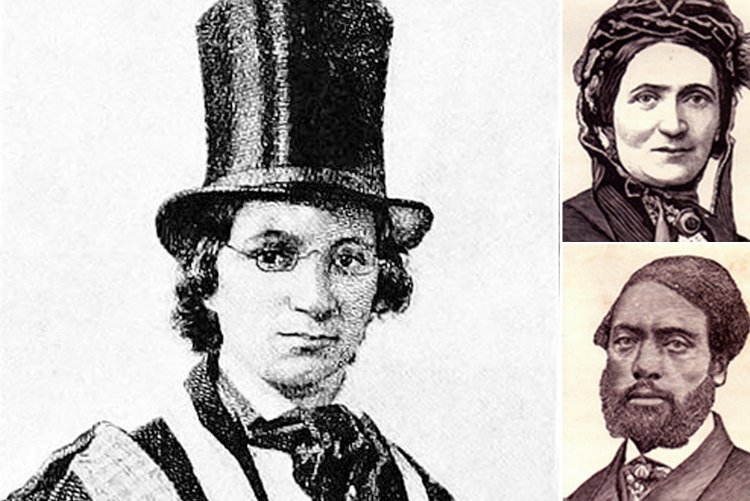
Ellen Craft’s mother was born to one White parent and one Black parent. Ellen’s father was her mother’s White master which gave her a fair complexion. At the age of 20, she married a fellow slave named William Craft who saved some money when he was hired as a carpenter. They decided they did not want to raise their children in slavery. So, during the Christmas season of 1848, Ellen cut her hair short and with William’s earnings, bought clothes including a top hat, cravat, jacket, tartan, and a tassel to signify she was a slaveholder. They traveled on first-class trains, stayed in the best hotels, and Ellen even dined with a steamboat captain one evening. On December 21, they boarded a steamboat bound for Philadelphia and arrived on Christmas Day morning.
5. In 1993, after realizing bonded labor was declared illegal by the Supreme Court of Pakistan, 10-year-old Iqbal Masih escaped only to be brought back by the police. He escaped a second time and helped over 3,000 other child slaves escape, only to be assassinated at the age of 12.

Iqbal’s family borrowed 600 rupees (less than $6) from a man who owned a carpet weaving business. To pay off that debt, Iqbal was sold at the age of four into bondage by his family to work as a carpet weaver. He had to work 12 hours a day, seven days a week, with only one 30-minute-long break, tightly bound to other children to prevent them from escaping. Even though he paid three cents per day, the loan kept increasing. He was less than four feet tall and weighed only 20 kilograms.
At the age of 10, he found out that bonded labor was illegal and so tried to escape. But he was caught by the police and handed over to the man he was working for. He escaped a second time and attended the Bonded Labor Liberation Front (BLLF) School for former child slaves. He helped free 3,000 other Pakistani children who were in bonded labor. In 1994, he received the Reebok Human Rights Award in Boston and traveled the world increasing awareness on the plight of children in bonded labor. On April 16, 1995, he was fatally shot after returning from a trip to America.
6. In 1861, Robert Smalls escaped by stealing a Confederate ship. After the White officers disembarked to shore, he dressed up as the captain, gave all the right signals, and took the ship to the Union Navy.
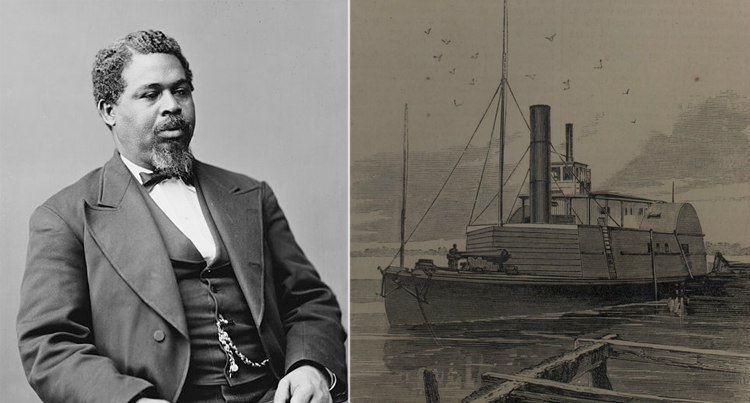
After the Civil War began in 1861, Smalls was assigned to steer the CSS Planter, a Confederate, armed military ship. Apart from Small, there were eight Black crew members and three White officers aboard. He confided in seven crew members he trusted about his escape plan. On May 12, 1862, the crew loaded 200 rounds of ammunition and 20 cords of firewood onto the Planter before docking. As was their custom, the crew were left behind on the ship while the three officers left to spend the night ashore.
Smalls put on the captain’s uniform and a straw hat similar to that the captain wore. He sailed the Planterto another wharf to pick up his and the crew’s families. He then guided the ship through five Confederate harbor forts giving the correct signals and copying the captain’s manners. At 4.30 AM, he headed straight for the Union Navy fleet with a white bed sheet as a surrender flag. In addition to providing the Union with ammunition, he also provided the captain’s codebook and a map of mines and torpedoes laid in Charleston’s harbor. This intelligence allowed Union forces capture Coles Island without a fight.(source)
7. Since 1835, Harriet Jacobs escaped her master’s sexual advances by spending seven years hiding in her grandmother’s coffin-like attic crawlspace. Finally, in 1842, she escaped to the North and to friends in the Philadelphia Vigilant Committee.
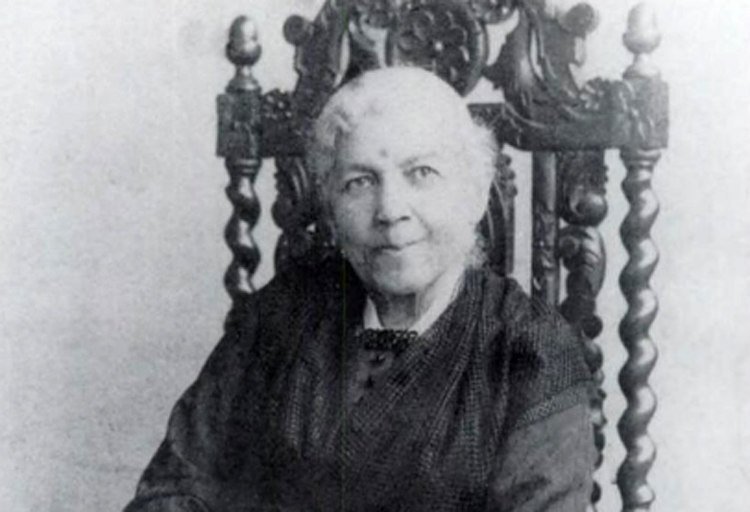
Harriet Jacobs was born into slavery to a mixed-race mother. When she was young, Jacobs was left to a man named James Norcom who started to sexually assault her when she came of age. He refused to let her marry, even to a man of high status. To escape his attempts, Jacobs took a free White lawyer named Samuel Sawyer, who was later elected a member of US House of Representatives, as a consensual lover. With him, she had two children, but being born to a slave mother they became Norcom’s slaves too, and he threatened to sell them if she refused his advances.

By 1835, finding her situation unbearable, she took to hiding in a swamp and then in the attic of her grandmother’s shack. Sawyer bought their two children but did not free them as manumission was made difficult following the Nat Turner slave rebellion in 1831. He let the children live with their grandmother and Jacobs could get glimpses of them from the attic. In 1842, she escaped to Philadelphia on a boat where she found work as a nursemaid.
8. In 1838, Frederick Douglass escaped by boarding a train to Harford County, then a steam ferry to Perryville posing as a free Black seaman, then a train to Wilmington, and finally a steamboat along the Delaware River to Philadelphia. His entire journey to freedom took less than 24 hours.
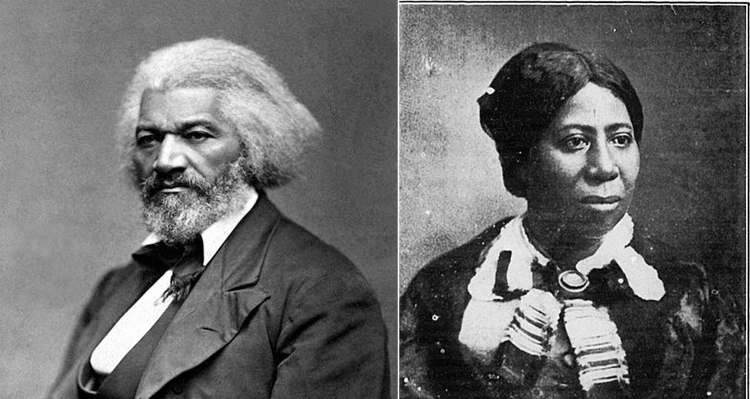
Frederick Douglass was born into slavery and was separated at a very young age from his mother. His mistress, in the beginning, felt kindly towards him and began teaching him the alphabet. But her husband convinced her that literacy would encourage slaves to rebel. However, Douglass secretly kept learning to read and as he grew up, began teaching other slaves to read the New Testament at Sunday school. For six months, it went unnoticed. Several plantation owners soon became troubled by their slaves learning to read and, armed with clubs and stones, dispersed the congregation permanently. Douglass was whipped regularly since then until he rebelled against the beatings.
Douglass made two unsuccessful escape attempts. In 1837, he fell in love with and married a free Black woman which strengthened his resolve to escape. On September 3, 1838, he successfully escaped by making a series of journeys. His wife gave him part of her savings to cover his traveling costs and a sailor’s uniform to pass off as a free Black seaman from whom he also obtained identification and protection papers.
9. Enslaved and sold by the ISIS following the Sinjar massacre in 2014, 18-year-old Shadi suffered months of torture and rape. After several escape attempts were thwarted by people who pretended to help her, she managed to escape her captives.

On the night of August 3, the Islamic State of Iraq and Levant (ISIL), also known as the Islamic State of Iraq and Syria (ISIS), attacked and captured the town of Sinjar, Nineveh Governorate, Iraq. Thousands of Yazidi men were killed and abducted in what is known as the Sinjar massacre. Around 5,000 women were abducted and sold into sexual slavery. Among them was Shadi who was sold along with another woman and her nephew to an American man who wanted to marry her. To avoid that, she told him that she was pregnant. When he found that she lied, he tied her hands and raped her.
The three of them made several attempts at escape, but he would eventually find them either with the help of the militia or the people who pretended to help them but would call him instead. Every time they tried to escape, they were punished. After several attempts, they finally managed to escape.
10. In 1771, James Somerset, a slave in colonial America, escaped but was caught again by his owner while in England. The case for his freedom went to court, was supported by notable abolitionists, and became the milestone legal case that effectively ended slavery in Britain.
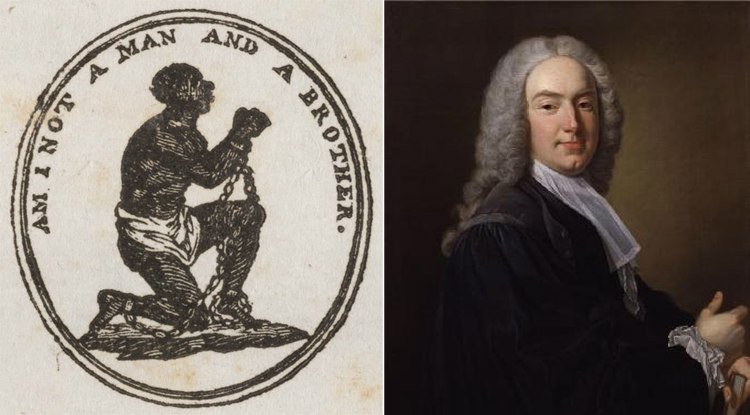
After being enslaved, James Somerset was purchased by customs officer Charles Stewart when he was in Boston. In 1769, Stewart returned to England bringing Somerset with him. In 1771, Somerset escaped but was captured and imprisoned on the ship Ann and Mary that was to leave for Jamaica. His owner intended to sell him as a plantation slave. On December 3, Stewart’s three godparents filed a writ of habeas corpus forcing the ship’s captain to bring him to the Court of King’s Bench six days later. The Chief Justice, William Murray, 1st Earl of Mansfield, set Somerset free on recognizance in January and the case was heard in February.
Meanwhile, the case attracted a great deal of attention from the public and several individuals donated monies to pay for the lawyers on both sides. Somerset received the support of notable abolitionist Granville Sharp as well as from five different lawyers who spoke at three different hearings between February and May. Lord Mansfield allowed a month’s time for both parties to reach a settlement by letting Somerset free. A month later, he passed judgment stating that no master is allowed in England to forcefully sell a slave abroad for any reason and that therefore the Black must be discharged.
Source : unbelievable-facts.com

Facebook Comments